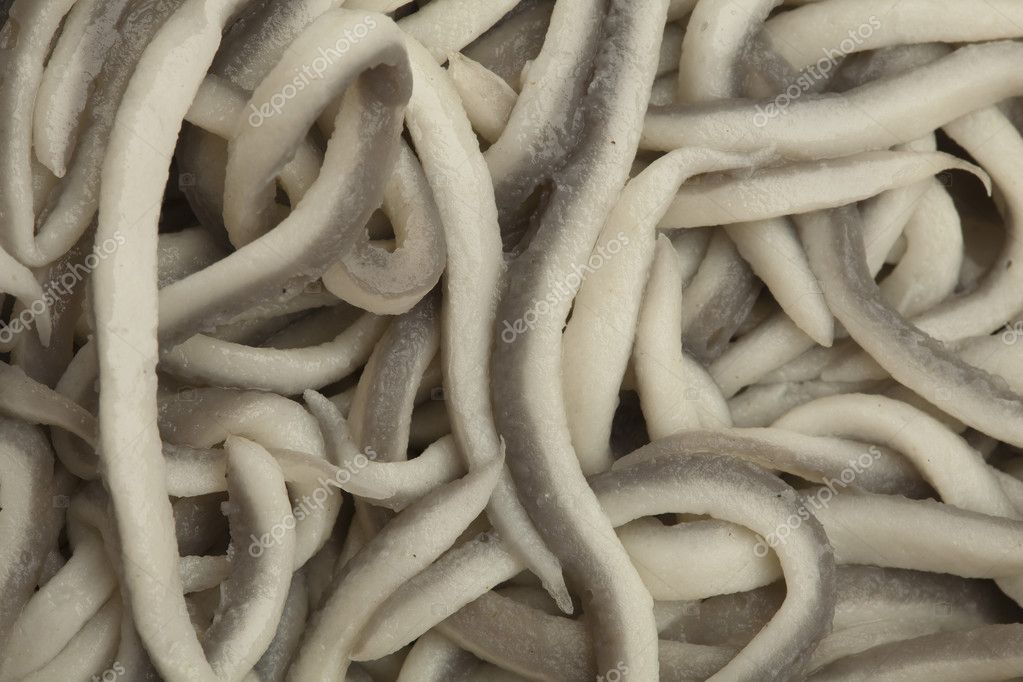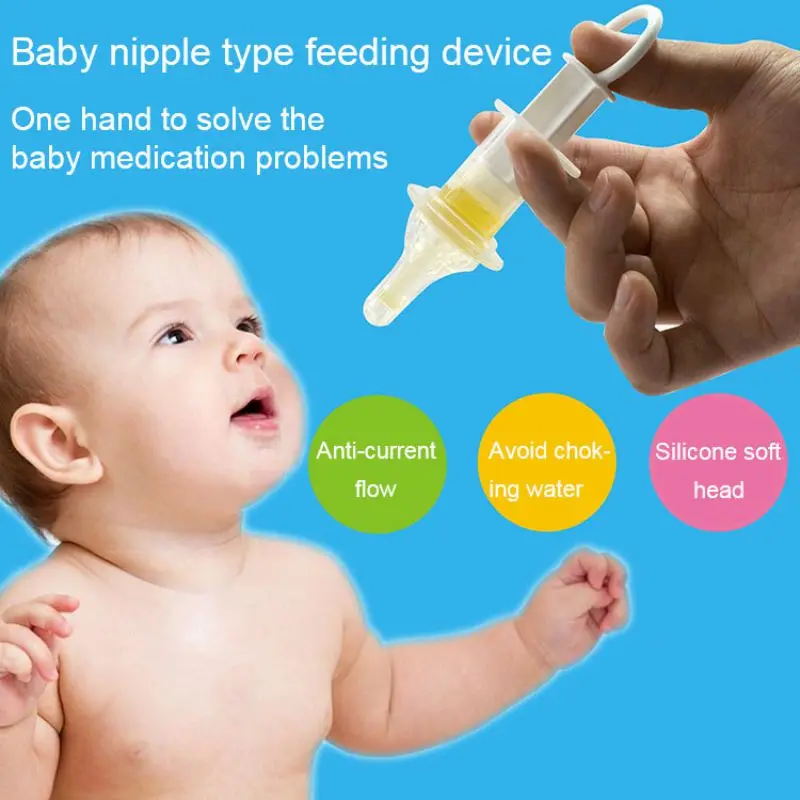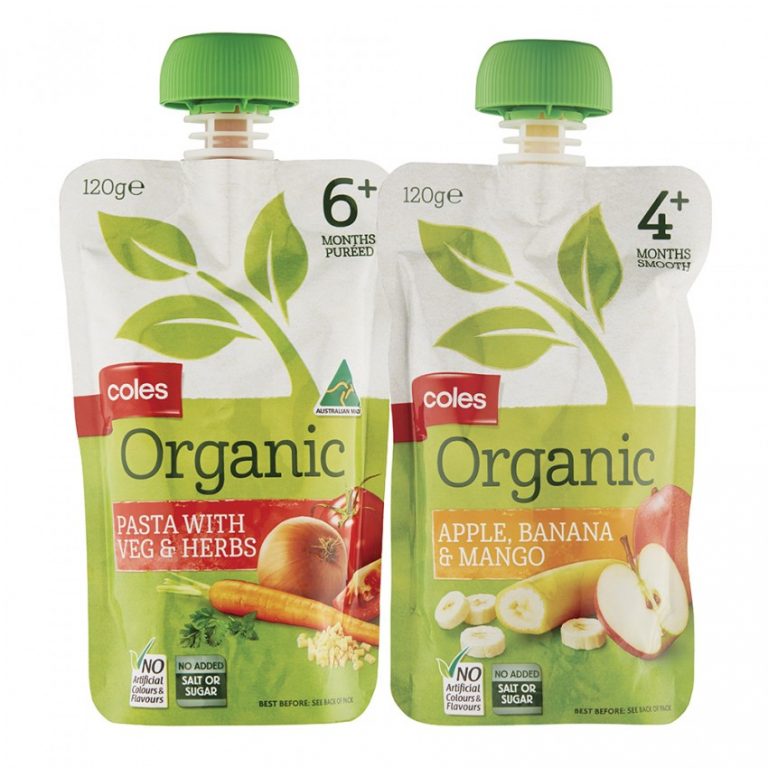Finger foods for 6 month old baby no teeth
15 Finger Foods For A 6 Month Old Baby
·
Written by Jo Charnock
·
Written by Jo Charnock
On this Page:
- 1. Sweet Potato, Pumpkin & Carrots
- 2. Avocado
- 3. Bananas
- 4. Broccoli & Cauliflower Florets
- 5. Cooked Apples & Pears
- 6. Pasta
- 7. Eggs
- 8. Cheese
- 9. Toast
- 10. Soft Fruits
- 11. Melon
- 12. Meat
- 13. Zucchini & Eggplant
- 14. Baby Cereals & Puffs
- 15. Tofu
- Tips For Feeding Finger Foods To A 6 Month Old Baby
Has your little one already started purees, and now you’re wondering what to use as finger foods for a 6 month old baby? Or maybe you’re skipping the purees and want to try baby led weaning instead? Knowing which finger foods to feed your baby can be a worrisome problem for parents. Here we list 15 safe finger foods for a 6 month old baby.
15 Finger Foods For A 6 Month Old Baby
1. Sweet Potato, Pumpkin & CarrotsWhile you might think of these three veggies as perfect for purees, they also make great finger foods too. For the best results you can steam or roast these and then either roughly mash them or cut them into small pieces. The veggies should be soft to touch, but not too mushy. Sweet potato, pumpkin and carrots are rich in protein, beta-carotene, and vitamin C.
2. AvocadoAvocados are a rich source of potassium and omega-3 fatty acids which are said to help boost your baby’s brain development. They are a great finger food for a 6 month old baby, but make sure they are perfectly ripe and soft, so your baby doesn’t hurt their tiny mouth.
3. BananasBananas are also a rich source of potassium and omega-3 fatty acids. They are also super easy to prepare; just peel a ripe banana and cut into small pieces!
4. Broccoli & Cauliflower Florets
Broccoli & Cauliflower FloretsTo get the most nutrients out of your broccoli or cauliflower florets, steam or roast them until soft, and, of course, cut them into small pieces. Be careful not to overcook them as then they will turn to mush. Broccoli and cauliflower are good sources of vitamin C which helps make your baby’s bones stronger.
5. Cooked Apples & PearsRaw apples and pears may be too hard for a baby’s first finger foods. So it’s better to peel and chop the apples and pears into finger-sized wedges, just big enough for your baby to grasp. You can then steam the pieces for a few minutes so that they are soft enough for your baby’s mouth.
6. PastaExperts generally recommend introducing pasta at around 5 or 6 months of age. When it comes to cooking pasta for your baby, you’ll want to slightly overcook it so it’s nice and soft. To start, try small pasta shapes like orzo or mini shells, or cut up fusilli or penne. Initially serve it plain, but as your baby is introduced to more foods you can toss the pasta with a little butter, olive oil or a homemade, low-sodium tomato sauce.
Initially serve it plain, but as your baby is introduced to more foods you can toss the pasta with a little butter, olive oil or a homemade, low-sodium tomato sauce.
Doctors used to advise waiting until your baby was at least 1 year old before introducing eggs. However, the American Academy of Paediatrics now says that early exposure to eggs might help prevent food allergies in the future. So now you can whip up a soft omelette or some scrambled eggs that will make perfect first finger foods for a 6 month old baby.
8. CheeseIf your baby has shown no signs of a dairy allergy, then it’s perfectly safe to introduce cheese as early as 6 months. Cheese is a good source of protein and will help expose your baby to different sources of nutrients. Use mild flavour pre-sliced cheese or cut a mild cheddar into small cubes which your baby will love.
9. ToastSince bread can be soft and chewy, and can stick to your baby’s mouth it’s best to toast bread first. The toast can be cut into manageable ‘fingers’ which your baby will love to ‘gum’ or chew on. Later you can add spreads such as hummus, cream cheese or avocado for a tastier snack.
The toast can be cut into manageable ‘fingers’ which your baby will love to ‘gum’ or chew on. Later you can add spreads such as hummus, cream cheese or avocado for a tastier snack.
When soft fruits such as peaches, plums, mango and apricot are ripe, they make perfect finger foods for a 6 month old baby. Make sure you remove any pips or stones and cut the fruit into small pieces. Very ripe fruit is naturally sweet which means your baby will be asking for more!
11. MelonRipe melon has a soft, watery texture that’s easy to bite into and swallow. Make sure you remove the seeds and serve ripe melon in small pieces to avoid any choking hazard. In addition, please be aware that if your baby does develop a rash that can be traced to melon, it is most likely due to the melon’s ‘acidity’ and not to any allergy.
12. MeatAfter soft fruits and vegetables, diced chicken breast and ground beef are pediatrician-approved next-stage finger foods for your baby.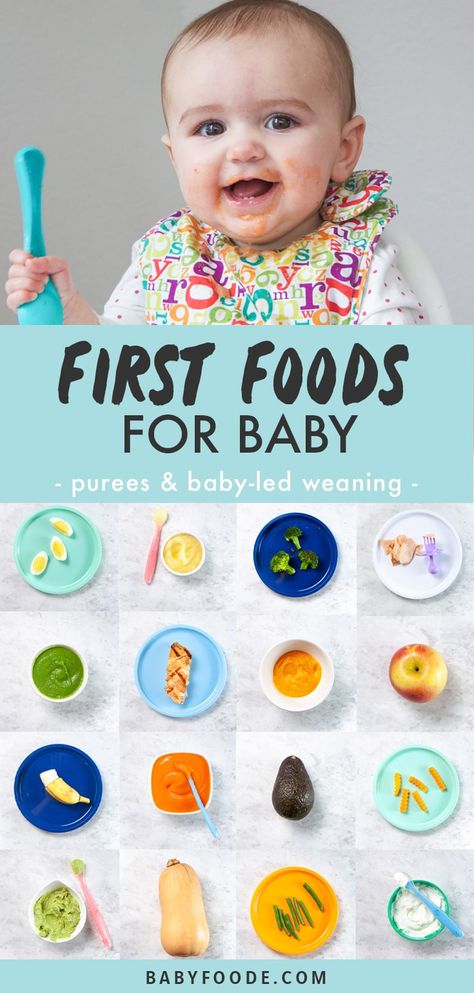 Just make sure they’re thoroughly cooked and cut into very small pieces. Chicken and beef provide much needed protein for your baby.
Just make sure they’re thoroughly cooked and cut into very small pieces. Chicken and beef provide much needed protein for your baby.
Zucchini and eggplant can be introduced as soon as your baby is ready to eat solid foods. You can roast, boil, grill or steam zucchini and eggplant slices as first finger foods.
14. Baby Cereals & PuffsSpecial baby cereals and puffs offer complex carbohydrates which can provide fibre. They also provide a variety of different textures, vitamin B, and more. Dry baby cereal and puffs are some of the most popular first finger foods for babies, as they let your baby practice the pincer grasp by picking up one at a time.
15. TofuWhether cooked or uncooked, tofu is an awesome plant-based source of protein, and a perfect first finger food for your baby. However, rather choose firm tofu, which is still quite soft, as opposed to soft or silken tofu, which will most likely fall apart in your baby’s hand and create a huge mess!
Tips For Feeding Finger Foods To A 6 Month Old Baby
- Check the age recommendation on any recipe before feeding your baby.

- Make sure you follow the 3 day rule when introducing new foods to be aware of any allergic reaction.
- Always be in the room with your baby when they are eating.
- With any new food, only introduce small amounts at a time.
- Never force your baby to eat anything, and let them decide when they have had enough.
- In case of any doubt, consult your doctor.
Finger food helps to give babies some control over what they eat and how much. Sometimes they’ll eat the food, sometimes not. But that’s all part of the process of learning self-regulation. Even little kids can tell when they’re hungry or full, so let them learn to recognize and respond to these cues.
For more information about what and when to introduce finger foods to your baby we have created a handy feeding schedule for a 6 month old baby for your convenience.
If you have any tips or can recommend any other finger foods for a 6 month old baby please feel free to comment below!
Reference:
Finger Foods for Babies – KidsHealth. org
org
125 first foods for babies with no teeth
by Jo
Can you imagine eating food without any teeth? Just with your gums alone? I surely find it hard to picture, but we were once like our little ones. Toothless, like a 100 year old grandma. Luckily, there are first foods for babies with no teeth. And I found 125 of them for you to read about.
PIN IT FOR LATER
The original article was written back in 2018. This is a 2021 updated version.
Since then, I have re-written and updated this post to reflect the changes I have gone through when it came to my own beliefs/thoughts and how I word things when talking about feeding kids. As such, the remains of the original article can be seen in the comments section. Word of caution, it’s not something that makes too much sense anymore and some parts I am not very proud of. I even considered deleting the comments altogether, but that doesn’t seem just right either. Either way, I hope this article helps you, even a bit.
I even considered deleting the comments altogether, but that doesn’t seem just right either. Either way, I hope this article helps you, even a bit.
Yes, the Pinterest pins show blueberries and they are a choking hazard, but do read the entire post. I have tried to give suggestions for each type of food so as to make them safe even for little ones.
If I missed anything, give me a shout.
But how can babies even chew without teeth?
Well, the truth is, they don’t need teeth to chew.
Chewing involves movements of the jaw, tongue and cheek. Teeth are used later on to break up more complex fibres.
This is technically done with the teeth that are more at the back of the mouth, called molars. The first molars show up somewhere between 13 and 19 months old, as you can see from the graph below.
So if we were to wait that long before we gave our little ones any food that can be easily munched on with the gums, then we would seriously endanger his or her capabilities of dealing with food (not to mention the fact that after around 8 months, the gag reflex moves further down the tongue and babies might experience a higher risk of choking if they are not accustomed to table foods yet).
Furthermore, babies are already experienced in munching away, because they would have spent a lot of time already with their fingers in their mouth, biting toys and other objects.
So encourage them to explore these with their lips, tongue and jaw, at the same time being careful of any pieces that might come off and increase the risk of choking.
So, assuming little one doesn’t have any teeth yet, what can I give him?
See the list below.
But before anything else, make sure baby meets the three signs he or she is ready to begin in the first place. I cannot stress this enough, guys, and it will save you lots of trouble down the road.
There was a time when the recommendations said to start solids at 4 months+ and I’m not sure that all the baby food manufacturers have come up-to-date with the current official advice regarding infant feeding. Always watch the signs in your baby and judge whether he or she is ready. This usually happens at around 6 months, give or take.
This usually happens at around 6 months, give or take.
Here you go, some ideas of first foods for babies with no teeth. I also added some notes and suggestions of serving for some of them. This is regardless of the method you use, baby led weaning or traditional. At some point, you’ll have to start giving them table foods.
And because I’m a fan of food groups, I have split them accordingly, for easier reference.
Note: please be aware of choking hazards. I find this article sums up pretty well what are the foods you need to pay extra attention to. As your little one develops his ability to chew, you need to be careful, teeth or no teeth.
Fruits and veggies
As a general rule, go for the ripest you can get, in the beginning, as these are usually softer for babies just starting out.
- Avocado. Serve as is, sliced into wedges, or served on toast, mashed, with an egg on top. You can also try a guacamole recipe, which is basically adding some tomato, red onion, a bit of pepper and some lemon juice to a mashed avocado.
 For an easier grip, you can toss it through some breadcrumbs or ground nuts.
For an easier grip, you can toss it through some breadcrumbs or ground nuts. - Banana. Serve as is, sliced or mashed. Here is a tip on how to offer it if baby is at the beginning, doing baby led weaning and has tiny hands. Also, here’s my recipe of baby’s chocolate you can make with banana and avocado.
- Apricot. Pick a softer variety, the riper, the better. Cut into wedges or mash.
- Tomato. Try serving them as such or on top of a pizza toast (just a slice of toast, with some mozzarella and tomatoes and baked for 10 minutes in the oven). My youngest sometimes enjoys it cut wedge-style.
- Peach. Extra ripe are usually softer.
- Mango. Go for the ripe ones.
- Strawberry. Remove the hull (the leafy and usually white part on top) before giving it to baby. Halved would be best. The bigger ones even cut into 4 pieces.
- Watermelon. Melts in the mouth. Remove the seeds and only give the red parts to baby.
- Pear. Peel it and if it’s too hard, you can bake it in the oven for a while, with cinnamon on top.
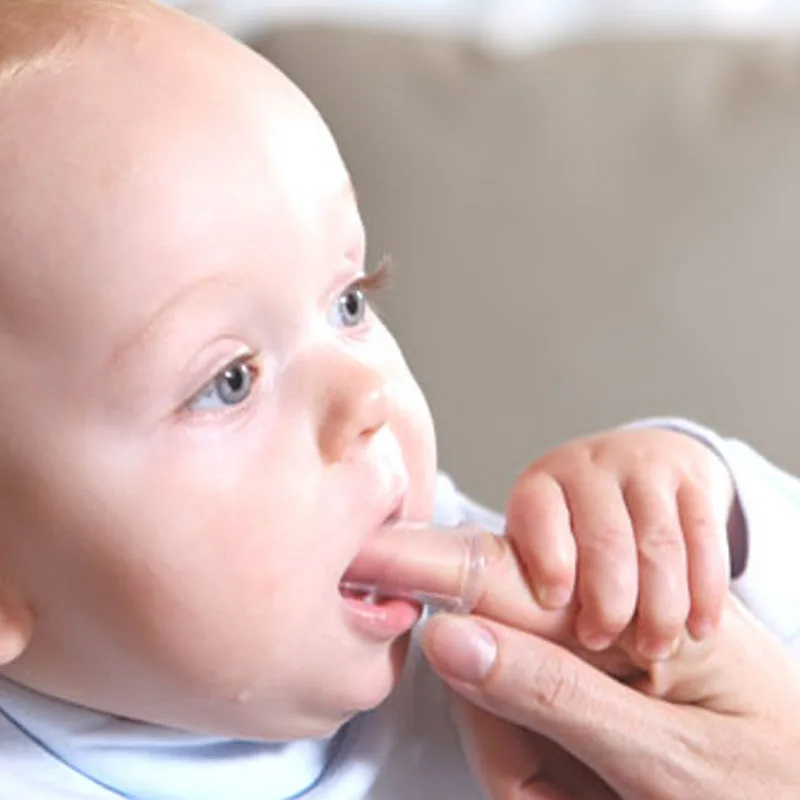
- Apple. Peel and cook it in the oven, like the pear, or shred it on a grater (I used to do this in the beginning when Emma was small; the finer side of the grater also turns the apple into applesauce).
- Muskmelon.
- Honeydew melon.
- Carrot. Steam, boil or bake in the oven to make it soft. Don’t offer raw to babies just starting out.
- Cauliflower. Steam, boil or bake in the oven with some seasoning on top.
- Broccoli. Here are 10 basic techniques for cooking broccoli from scratch, explained in-depth. Plus, you’re getting a free cheatsheet with the 3 ingredients that make broccoli taste good.
- Potato. Boil, bake or even steam until very soft.
- Sweet potato. Cook in the same way as a normal potato.
- Pumpkin. Bake in the oven until soft.
- Zucchini. Baked or boiled until it’s soft. Also grated works really well, incorporated in baked batters.
- Beetroot. Steam or boil. Be careful, though, as it contains a high amount of nitrates and it is not ok for baby to have in big quantities or too often.
 If you offer a varied menu, it shouldn’t be a problem.
If you offer a varied menu, it shouldn’t be a problem. - Grape. Cut them in quarters lengthways. Use this if you’re short on time.
- Satsumas or easy peelers. Cut in half for safety.
- Clementines.
- Raisins. If you leave them to hydrate in water for 1 hour or so they should give up their sweetness. They are a choking hazard as per the link I shared above, so pay extra attention. Better incorporate them in baked foods.
- Blueberry. Smash/squish them for safety or cut them in half.
- Blackberry. I would halve these in the beginning, as there are some quite big.
- Cucumber. I would only offer the middle part in the beginning, as it’s softer and easier to manage for babies just starting out.
- Peas. Great for improving that pincer grasp.
- Sweetcorn.
- Baked beans. Great source of iron.
- Plum.
- Kiwi.
- Dried apricots. Great source of iron, like any dried fruit, really. A bit on the sweet side, so be mindful of that.

- Cherries. Cut in half or quarters.
- Sour cherries. Serve the same as cherries.
- Pineapple.
- Orange. Cut the pieces in half or more.
- Raspberries.
- Olives. Beware of how salty they are. If left in water, they will lose their saltiness.
- Papaya.
- Dried cranberries. Same as raisins, so better incorporate them in a batter/dough.
- Parsnips. Boil, steam or bake in the oven with some seasoning on top. You can remove the center which is usually harder.
- Butternut squash. Bake or steam.
- Bell pepper. Bake or boil.
- Green beans. Boil or steam.
- Chickpeas. Best boiled or turned into hummus or falafel.
- Onion. Boiled or baked.
- Turnips. Boiled until soft. You can make a veggie broth by boiling most of the hard veggies.
- Cabbage. Boiled or baked.
- Mushrooms. Make a sauce for pasta or bake them in the oven.
- Lentils. Turn them into soup or stews.
- Eggplant.
 Baked in the oven is your best bet.
Baked in the oven is your best bet. - Asparagus. Can be a bit hard, but baby can munch away if properly cooked, like in the oven or steamed.
- Edamame. Never cooked them, but I guess either boiled or steamed.
- Kaki fruit.
- Lychee. Just make sure to peel the outer shell.
- Grapefruit. Cut each slice in three smaller pieces or more, depending on size.
- Pomelo. Cut each slice in multiple pieces.
- Lemon. My youngest loves his lemons cut into wedges and he just sucks at the pulp.
- Figs
- Passion fruit
- Yam. It’s a root vegetable and can be cooked in a similar way to a sweet potato.
- Brussel sprouts. Boiled, steamed or baked with seasoning.
- Nectarine. Go for riper ones and cut into wedges.
- Ugli fruit.
- Plantains. They look like bananas, but you have to cook them. They come from Jamaica, I believe.
Related posts
- 14 smash cake ideas – healthy, no sugar
- Blueberry galette (a recipe great for blw)
- 33 tips to easily end picky eating for good
- 5 alternatives to baby cereal that won’t break the bank + 1 tip
- Why you should not feed your baby smoothies, overnight oats, maple syrup and other foods
- Bread and butter pudding (baby friendly, also great for babies with no teeth)
Meat/poultry/fish
- Salmon.
 I usually bake it in the oven, wrapped loosely in baking paper or foil, for around 20 minutes.
I usually bake it in the oven, wrapped loosely in baking paper or foil, for around 20 minutes. - Cod. Cook the same way as salmon.
- Haddock.
- Mince meat. You can cook some meatballs.
- Steak. Serve in shredded strips, like the chicken.
- Chicken. Serve in shredded strips for babies to suck on and munch away later on.
- Tuna. I am guilty of buying cans of it, but if you can bake it from scratch, that’s even better. Squeeze a bit of lemon to give it some flavour.
- Crab. If your little one is not allergic to seafood, you can give it a go.
- Prawns/shrimp. Great finger food.
- Homemade sausages.
Breads/cereal
- Bread. To prevent it from sticking to the roof of the mouth, toast it. Or make some french toast.
- Rice. Great in rice puddings.
- Porridge
- Porridge fingers
- Millet. Boiled in milk or turned into a pudding (see my recipe here)
- Quinoa.
 Boiled and eaten as a side or added to porridge, for example.
Boiled and eaten as a side or added to porridge, for example. - Amaranth. Same as quinoa.
- Buckwheat. Same as the above.
- Semolina pudding.
- Spaghetti
- Pasta. Macaroni, penne, fussili or bowtie shapes work well for beginners.
- Noodles
- Homemade pizza
- Polenta
- Cous-cous
- Naan bread
- Pitta bread
- Tortillas
- Rice cakes. Go for the lowest salt option.
- Shreddies. Simple, no flavor, no added salt or sugar, just 100% wholegrain. Serve in milk.
- Focaccia
- Chapatti fingers (an Indian flat bread)
Eggs (in the UK, those that have a lion stamped on the shell are salmonella-free, therefore the yolk can be left runny when cooked – otherwise please cook the yolk completely)
- Boiled eggs
- Poached eggs (only in the UK)
- Fried eggs (just don’t use oil and fry in a non-stick pan)
- Scrambled eggs
- Omlette
- My baked omlette
Dairy
- Yoghurt
- Cheddar cheese.
 Just watch out for salt and the amount present. Grated is best at the beginning.
Just watch out for salt and the amount present. Grated is best at the beginning. - Mozarella. Choose the lowest salt option.
- Sana. It’s an Eastern European type of dairy, similar to yogurt, but slightly drinkable.
- Kefir. Similar to sana. You can find them in the European section in the supermarket.
- Curd cheese. I have a recipe for it here. It’s a no-salt version of cheese, perfect for babies.
- Cottage cheese. Just make sure the salt levels are okay.
Others
- Tofu. Just watch out for the salt content.
- Homemade muffins (try this carrot muffins recipe)
- Homemade pinwheels
- Homemade banana bread
- Homemade biscuits (easiest recipe: 100 g flour, 100 g butter and 100 g of homemade curd cheese or ricotta cheese; everything mixed and baked in the oven)
- Pancakes
- Waffles. Here’s a basic recipe to follow, which is infinitely customizable. A bit of waffle theory never hurt.
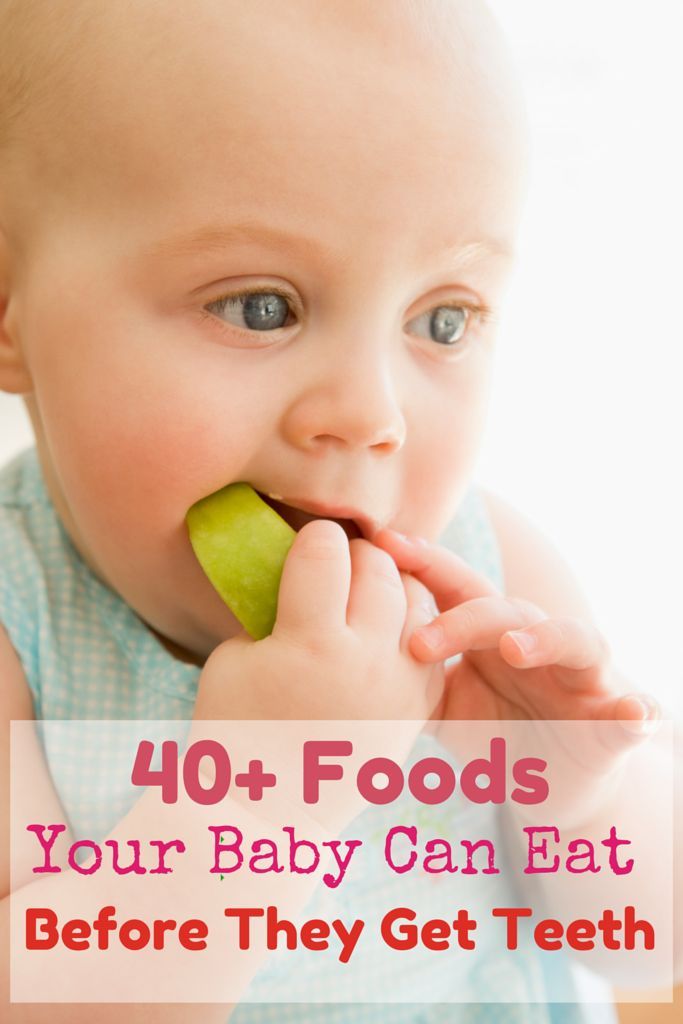
- Fritters. I have a recipe here, very adaptable to what you have in your pantry.
- Homemade nuggets
- Any homemade cake-like consistency, as long as there is no sugar, maple syrup, honey (if baby is under 1 year old), whole nuts, etc.like this baked oatmeal cake.
- Homemade popsicles or anything that’s made out of fruit and yogurt and frozen.
- Peanut butter. It is best to spread it on toast or on slices of banana. Just make sure it’s 100% nuts.
- Almond butter. Same as peanut butter.
- My apple pudding
BONUS:
126. 2 ingredient cookies. The easiest snack ever. Pair it with some dairy and you’re good to go.
127. 3 ingredient pancakes. The fluffiest and easiest pancake recipe out there. Make sure to read my notes on timing and flipping and why those are the key elements for the fluffiness.
128. Spiced biscuits. I think these are great for when little ones are teething.
129. Easy scones. With only 3 ingredients at the base, these are soft and fluffy. Don’t overmix the batter though.
Don’t overmix the batter though.
130. A kid friendly brownie with a secret nutritious ingredient.
You are probably thinking: is there anything she hasn’t mentioned?
In fact, I haven’t mentioned the leafy vegetables, like spinach, lettuce, salad etc because babies might have a hard time tearing them apart so as not to stick to the roof of their mouths.
I also didn’t mention pomegranate, because of its high choking risk.
What comes next?
Knowing what to feed your kids might be a little easier now that you have this list, but actually getting them to eat or at least try any food is another story entirely.
This is why I have put together a 7-part blog series about how to get your little one to eat any food. It is based on more than 3 years of feeding little tummies, observing and taking mental notes about everything I did and everything they did at mealtimes.
I think you’ll find it useful and worth reading. You can save it on Pinterest for later reading or share with someone you know.
You can save it on Pinterest for later reading or share with someone you know.
Thanks!
Ioana x
START READING HERE >>
Categories Baby food, Blog, Featured, The basics Tags baby led weaning, BLW, finger foods, first foods© 2022 WEANINGFUL • Built with GeneratePress
Finger food - Encyclopedia Baby food
Viktoria Levchuk©
Finger food is baby food prepared in the form of pieces of boiled soft food so that the child can independently take it and transfer it to the mouth, chew it or swallow it without anyone help and any problems.
Finger food is a fun way to encourage the development of motor coordination and skills for biting, chewing and self-feeding. Food in pieces should be easy to grasp by children's fingers and long-term storage, and should not contain bones or seeds.
As soon as the child begins to take food with his fingers and put it into his mouth with reasonable hand-eye coordination, then the fun begins! Let your child experiment with soft snacks such as a banana or peach that can be “hand-mashed” to the right consistency. The more a child experiments with finger food, the faster he will masterfully feed himself.
The more a child experiments with finger food, the faster he will masterfully feed himself.
Finger food helps keep a child's food interest. As soon as he begins to feed himself on his own, then new taste horizons open up for him. What child refuses to try to bring the product to his mouth on his own, even if he didn’t really like it before.
Contents:
Very often mothers think at what age should they give finger food to their baby.
Honestly, even for me it's a difficult question. It's just that sometime between eight and nine months, the baby began to eat small pieces of food. The change in the consistency of food by age is very well described in the WHO recommendation, so it should be guided by.
Food consistency up to a year. Click on me!!!
However, you should not do it blindly and try to feed the baby in pieces at a certain age, perhaps he will not be ready yet. Children are all different, some want food in pieces, almost from the beginning of complementary foods, others are not ready for lumpy food for up to a year or more. Therefore, any decision on finger food is made based on the child and his readiness. An excellent preparation for finger food is a nibbler, which will prepare the child for lumpy food.
Therefore, any decision on finger food is made based on the child and his readiness. An excellent preparation for finger food is a nibbler, which will prepare the child for lumpy food.
The child has no teeth
Click on me!!!A child's gums are incredibly strong, as is the tongue, so the number of teeth is not an indicator of whether to give finger food or not. If the decision has been made to start complementary foods and the baby is doing well with mashed foods, then you can safely start giving small pieces of soft food when the baby is ready for it. At this stage, it is important to let the child try to eat food of a different consistency, more complex, in order to train the maxillofacial apparatus. Thus, the child gradually prepares for the full chewing of food with the help of the entire jaw, teeth and tongue.
How to know if finger food is safe for a child
A good rule of thumb to help prevent choking is to avoid anything hard (e.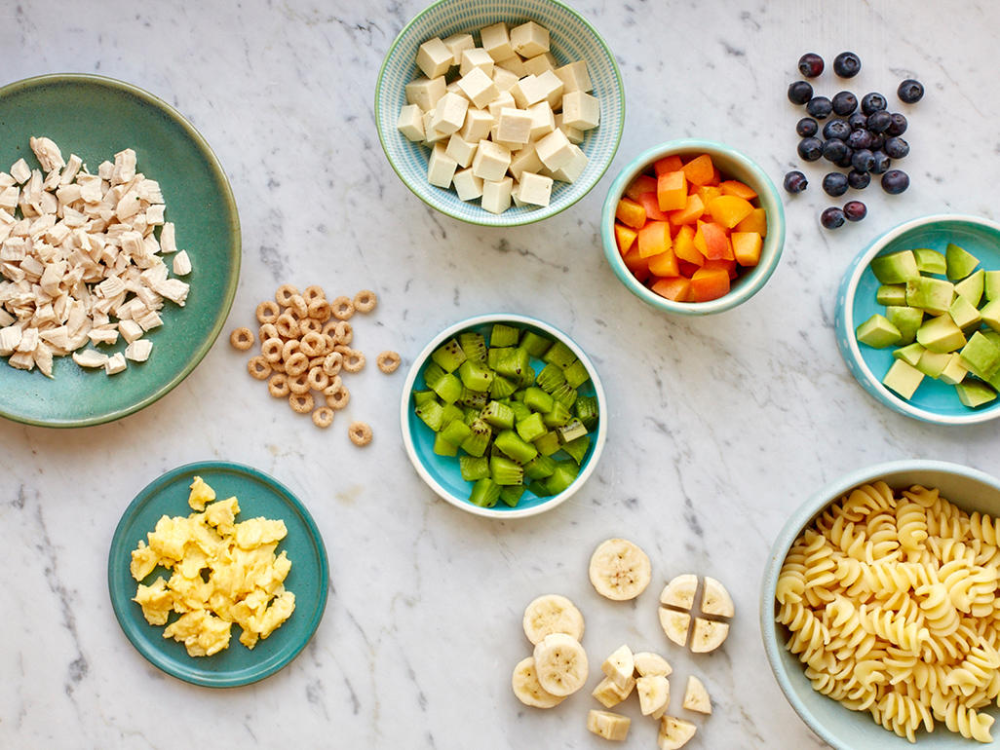 g. raw carrots), round (e.g. whole grapes), sticky (e.g. , spoon of nut butter) or too much gummies (such as gummies). At first, the child is given pieces of food in the form of sticks, which can be easily clamped in the child's bun, later, when the child begins to control the finger grip better, you can move on to cubes. At first, finger food should be soft, boiled and melt in your mouth. As a child learns to manage with such products, it is possible to complicate the task and switch to fresh soft foods, etc.
g. raw carrots), round (e.g. whole grapes), sticky (e.g. , spoon of nut butter) or too much gummies (such as gummies). At first, the child is given pieces of food in the form of sticks, which can be easily clamped in the child's bun, later, when the child begins to control the finger grip better, you can move on to cubes. At first, finger food should be soft, boiled and melt in your mouth. As a child learns to manage with such products, it is possible to complicate the task and switch to fresh soft foods, etc.
Foods that squeeze easily between fingers are good for older children and for younger children. Around 16-18 months, many babies are ready for more complex textures. During this period, cutting food into pea-sized pieces is also a good idea - many babies tend to put large pieces of food in their mouths, so small cubes are used to avoid choking. We always adjust the sizes of products according to the age and eating experience of our own child.
Usually the first finger food is biscuits or baby biscuits, which are very soft and dissolve easily in the mouth. The baby first sucks it, procrastinates, and learns to roll pieces of food in the mouth with the help of the tongue. A little later, when the teeth appear, you can give the product a little harder, for example, a soft apple, some parents play it safe and give a baked apple without a peel. Later, as new foods, vegetables and fruits are introduced into complementary foods, they are offered in the form of finger food, such as boiled broccoli or cauliflower. In general, the child can be offered almost all products in the form of finger food, which is introduced into baby food.
Should the product be peeled or not?
We give an apple to a child without a peel. The first finger foods in the form of vegetables and fruits are given without skins. Yes, the skin of many fruits and vegetables contains valuable nutrients. It is often recommended to leave the skin on in order to take full advantage of the nutrients contained in the product. But removing the top layer from fruits and vegetables helps reduce the amount of pesticides that may be in the product. Peeling fruits and vegetables helps avoid choking hazards due to the rough texture of the skins. The peel also usually sticks to the palate in the child's mouth, thereby hindering him, and can be there for a long time, and when the child swallows, the probability of choking in the absence of an adult nearby is higher. Getting rid of the skin at the beginning of complementary foods also helps prevent disorders
But removing the top layer from fruits and vegetables helps reduce the amount of pesticides that may be in the product. Peeling fruits and vegetables helps avoid choking hazards due to the rough texture of the skins. The peel also usually sticks to the palate in the child's mouth, thereby hindering him, and can be there for a long time, and when the child swallows, the probability of choking in the absence of an adult nearby is higher. Getting rid of the skin at the beginning of complementary foods also helps prevent disorders
digestion. And we also take into account that there are some vegetables and fruits, such as pumpkin and avocado, which need to be peeled, because their peel is really inedible. It is not worth getting rid of the product from the peel for a long time, only at first. Usually the first couple of months of complementary foods and exposure to finger food. Then the product with the peel is given to the child in the presence of an adult, after which it is advisable to check the baby's mouth to see if he swallowed everything. Forcibly open your mouth should not be, play the game "Show your tongue or where are your teeth." By the age of 1.5, the child copes well with the peel of fruits and vegetables, if it is too rough, then it easily spits it out.
Forcibly open your mouth should not be, play the game "Show your tongue or where are your teeth." By the age of 1.5, the child copes well with the peel of fruits and vegetables, if it is too rough, then it easily spits it out.
Choking
The presence or absence of teeth does not mean that a child can chew. Sometimes children can bite off a piece of food, try to swallow it whole and choke, so never leave a child alone while eating. Some children can store food in their mouths like hamsters, so we always check to make sure the child has swallowed everything before leaving the kitchen. You can read the article on suffocation here.
Our finger foods
At first I gave biscuits to my first child, later I switched to a fresh apple, mostly fresh fruits, he sucked and procrastinated them more than he ate. Later, food appeared in the form of a toy, i.e. we crumbled it, crushed it, and sometimes something got into our mouths. However, since breast milk is always given at the end of complementary foods, I was not too worried about whether the baby was full or not.
With the second child, finger food was a gradual transition from the nibbler. We used it for about a month, then I ventured to give the first pieces of food. But to be honest, the child himself tried the first pieces of food, namely, he stole an apple and took a bite. The first experience of finger food is always scary, because at first the child often coughs and spits out food, he is learning, so it is important to be with the child, if something goes wrong, then the parent will be able to provide first aid. I remind you that the child is suffocating quietly, not a single sound. If he coughs, clears his throat, then everything is within the normal range, you need to help get rid of the food that interferes. Rules for helping with choking know before introducing finger food into complementary foods. It is imperative to look and study, and then give a new consistency of complementary foods.
Of course, at first, only one type of finger food is placed in front of the baby, later a plate is bought, divided into three to five sections, which is filled with finger food. The baby is already given a choice of what to eat, so you can easily determine the taste preferences in nutrition.
The baby is already given a choice of what to eat, so you can easily determine the taste preferences in nutrition.
Finger food quick hacks
- The first finger food should be well kneaded between the gums.
- Food in pieces should be age appropriate - do not offer whole eggs to an 8 month old baby .
- If the child cannot raise his head and sit up without help, do not offer him finger food.
- The child should always sit in an upright position, not walk, especially at the first meeting, when he is offered baby food in the form of pieces, to avoid suffocation.
- NEVER leave your child unattended when serving finger food.
Examples of finger food
The first finger food is a biscuit or a baked apple. Those. food that does not need to be chewed, it melts easily in the mouth without additional help from the child. You can start with foods that have been well received by the child in a pureed form on a spoon, serving them in convenient cubes or pieces - the size of a pea for harder items, the size of a stick or wedge for softer foods.
Examples of finger food are:
Click me!!!- pieces of soft bread or crackers
- Soft cheese, Chedder or Mozarella
- Banana
- Ripe pear without peel
- Ripe soft green apple without a peel, the first time you can give boiled
- Boiled cabbage
- . carrots
- Boiled potatoes
- Boiled green peas
- Boiled pumpkin
- Boiled fish
- Boiled meat in the form of meatballs
- Pasta
- Quail eggs, etc.
*All products must be familiar to the child or introduced into complementary foods.
Finger Foods to Avoid
When it comes to feeding your baby with morsels, the biggest problem is preventing choking. So we do not allow him to eat anything without the presence of parents or any adult nearby. And we exclude any food that can get stuck in the child's airways:
Click me!!!- Popcorn,
- Nuts, peanuts,
- raisins and other dried fruits,
- raw vegetables (e.
 g. carrots),
g. carrots), - grapes,
- Cherries without bones, hard fruit and vegetables with a peel of
- Zhevaliy Confinctions
- popcorn, pretzels, corn chips and other snack foods
- marshmallows, etc.
Most doctors do not recommend these foods until the child can eat them safely - around 4 years (although it depends on the child, closer to 3 or 5 years).
Finger menu. Meals for babies
In fact, there is a whole book with "finger" recipes for little children who have not yet mastered cutlery, but can already eat with their hands. But I didn’t read it (once), but in the course of random experiments in our family, such finger dishes for our baby became popular.
Usually at 6 months, babies begin to receive complementary foods in addition to the main food (breast milk or adapted formula). Of course, at first it is mashed potatoes and liquid cereals, juices - something that is easy to swallow. But the child grows and quickly masters chewing skills (even if he has very few or no teeth at all!), improves fine motor skills and shows independence.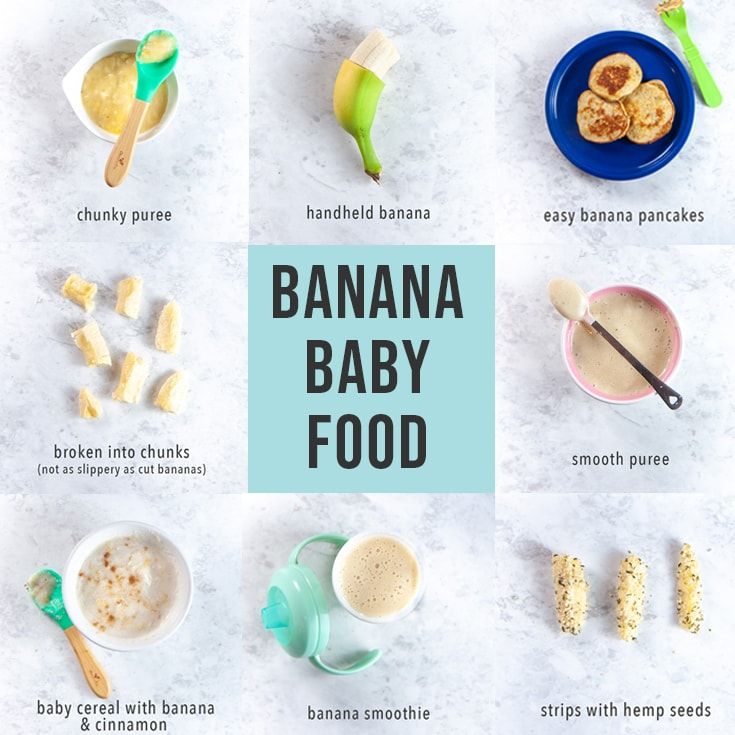 All these skills help to develop food, especially if it is appetizing, entertaining and you can eat it yourself.
All these skills help to develop food, especially if it is appetizing, entertaining and you can eat it yourself.
After a year, it usually becomes easier for parents - the baby already eats a lot from the common table, allergies for many go away or are not so acute - and it's time to turn meals into a joyful activity.
It is common to give children dairy products/cottage cheese, cereals, vegetables, fruit and meat/fish during the day. Here are some examples from personal experience.
We have breakfast with cats and dogs (do not be afraid, not a single cat or dog was hurt!) Many children periodically refuse porridge. Do not want and that's it! You can diversify cereal food and give self-baked cakes instead of porridge (you can also just make children's cookies or bread, but this is not so useful and interesting).
It only takes a short time to mix 2-3 cups of baby porridge (rice, buckwheat, corn, or multigrain) with about 1 cup of milk (or water if the porridge is dairy), an egg, and a tablespoon of cane sugar (but usually prepared porridge is already sweet, then you can not add sugar). You can add berries or some grated fruit or chopped nuts, put on a baking sheet greased with olive oil, an ordinary tablespoon or teaspoon with neat rounds, or faces, or hearts (the fantasy is limitless - you can "draw" everything that your baby loves) and put in an oven preheated to 200 degrees for 20-30 minutes. Voila, your baby will be happy to eat delicious and lovingly prepared healthy food by mom!
You can add berries or some grated fruit or chopped nuts, put on a baking sheet greased with olive oil, an ordinary tablespoon or teaspoon with neat rounds, or faces, or hearts (the fantasy is limitless - you can "draw" everything that your baby loves) and put in an oven preheated to 200 degrees for 20-30 minutes. Voila, your baby will be happy to eat delicious and lovingly prepared healthy food by mom!
You can also add baby cottage cheese instead of milk to this recipe - it will also be delicious.
We dine with green trees and the sun. Boiled broccoli is so healthy and so similar to a tree or a bush that if you give a child a little show and show how you can eat it all, he will surely be delighted.
My daughter is one year old, she knows how tall the trees are in the street. At lunch, I once showed her, using the example of broccoli, how you can pick it up yourself and show a tall tree. She proudly takes a piece, lifts it up, and then happily puts it in her mouth. Cauliflower for her is a "blooming" tree.
Cauliflower for her is a "blooming" tree.
Slices of boiled carrots or peppers (but it takes longer and you need to remove the skin so that the baby does not choke) or potatoes, or half an egg yolk can serve as the sun. You can also take the sun, show how bright it shines and ... gobble it up!
Cucumber straw weed, tomato flowers and green peas - the most common foods can be served as an entertaining side dish so that the baby develops fine motor skills by picking up pieces with his hands, learns to chew on his own (which does not happen with puree) and, importantly, learns to control feeling full, eating exactly as much as his body requires.
Meat or fish meatballs or pieces of large "adult" cutlets will perfectly play the role of "balls", "balls", running past the "bears". Yes, and just a "patty" like a child, if he sees how she likes her mother.
From the pulp of bread you can "make" a flower or an animal and give it to your child as a reward for a wonderfully eaten dinner!
We have lunch from a cup. All children learn to drink independently in different ways. Someone quickly learns to hold a cup with both hands and drink from it;
All children learn to drink independently in different ways. Someone quickly learns to hold a cup with both hands and drink from it;
In any case, encourage and help your baby improve by giving him more opportunities to drink without your help, offer different options - and let him choose the one that he likes at the moment.
A glass of milk, milk drink, yoghurt or baby kefir is good for an afternoon snack. You can have a bite of not too hard chopped or even whole fruit (if it is convenient for the baby to hold it, for example, a banana) or a bagel, or diet bread (because it crunches so funny!).
Princess's dinner on a pea. In my case, this is the princess "on the berry". As soon as the season of berries has begun, the daughter no longer wants to eat porridge from a spoon, but if a delicious berry flaunts on top of each spoon, then another thing! Many more parents give the child a second spoon so that he also has the opportunity to carry it in a plate and learn to eat with it.



